[ad_1]
The vermilion powder is thick all along her centre parting, the kumkum bindi large on her forehead, her fingers drenched in alta, the maroon sari hugging her frame like a shroud. The red is interrupted only by metallic accents — piercings in her upper lip and chin, a double gold band on the bridge of her nose, long strings of heavy temple jewellery in her ears. A kolam grid, also in metal, emerges on her onyx-like chest as her feline eyes open to reveal the green of, and a certain lifelessness in, her pupils. The woman stands in a gently flowing stream, but as one absorbs the details of this artwork, titled The Wife, that eerie sensation is inescapable, that of hovering on the edge of the ‘uncanny valley’.
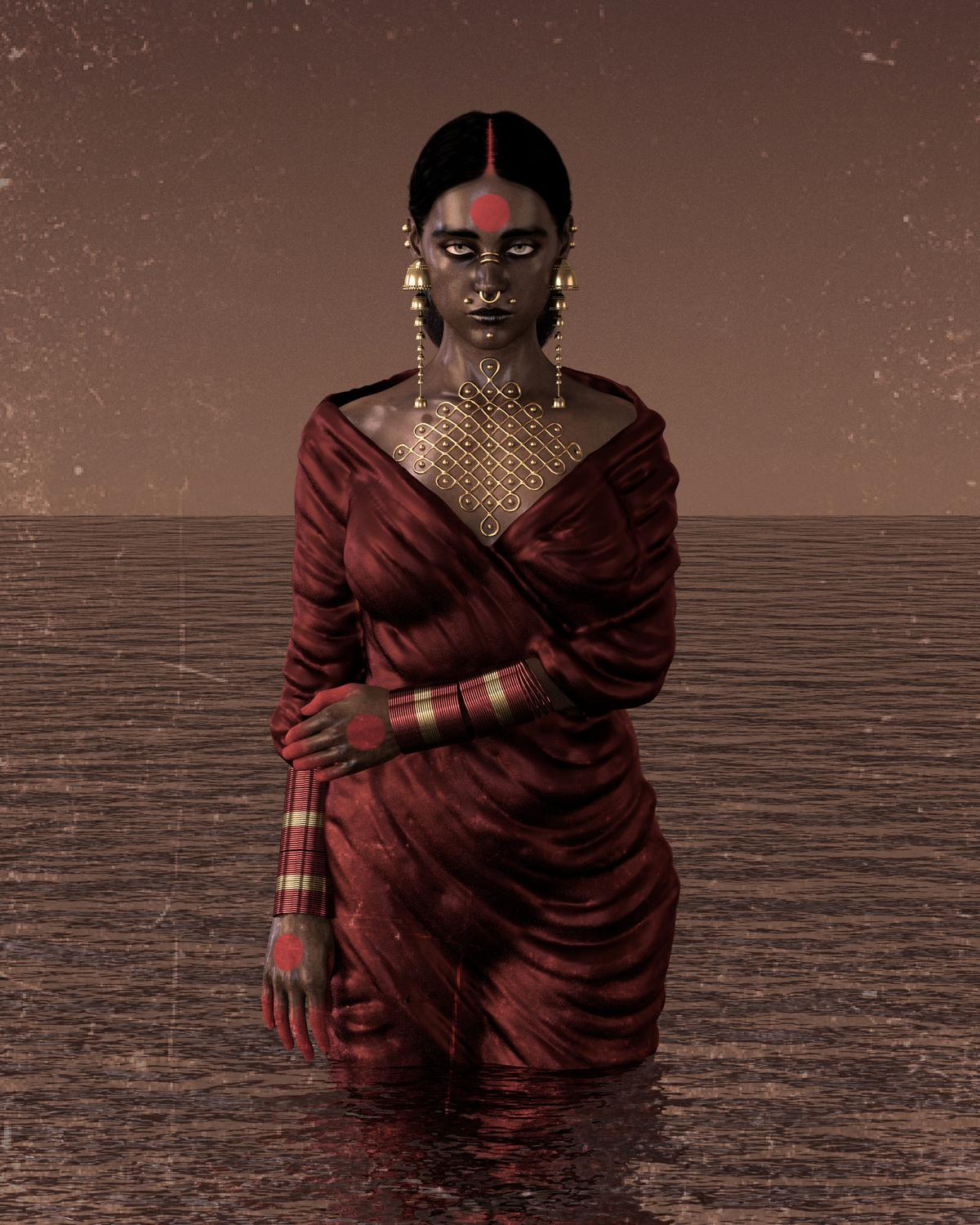
The Wife
“You can’t get too emotional with 3D or CGI work, it is always a bit stiff,” explains Samyukta Madhu, the Chennai-born digital artist based out of Berlin who has created The Wife among a series of virtual models — using 3D and CGI softwares — as part of her latest series Reincarnations: Ghosts of a South Asian Past. Madhu, 29, was struck by the jewellery she saw in colonial-era photographs of women from Tamil Nadu and Sri Lanka, that she came across a year ago while surfing the Internet. It also made her wonder how notions of beauty might have been different “had westernisation and colonisation not wiped out so much of our culture”.
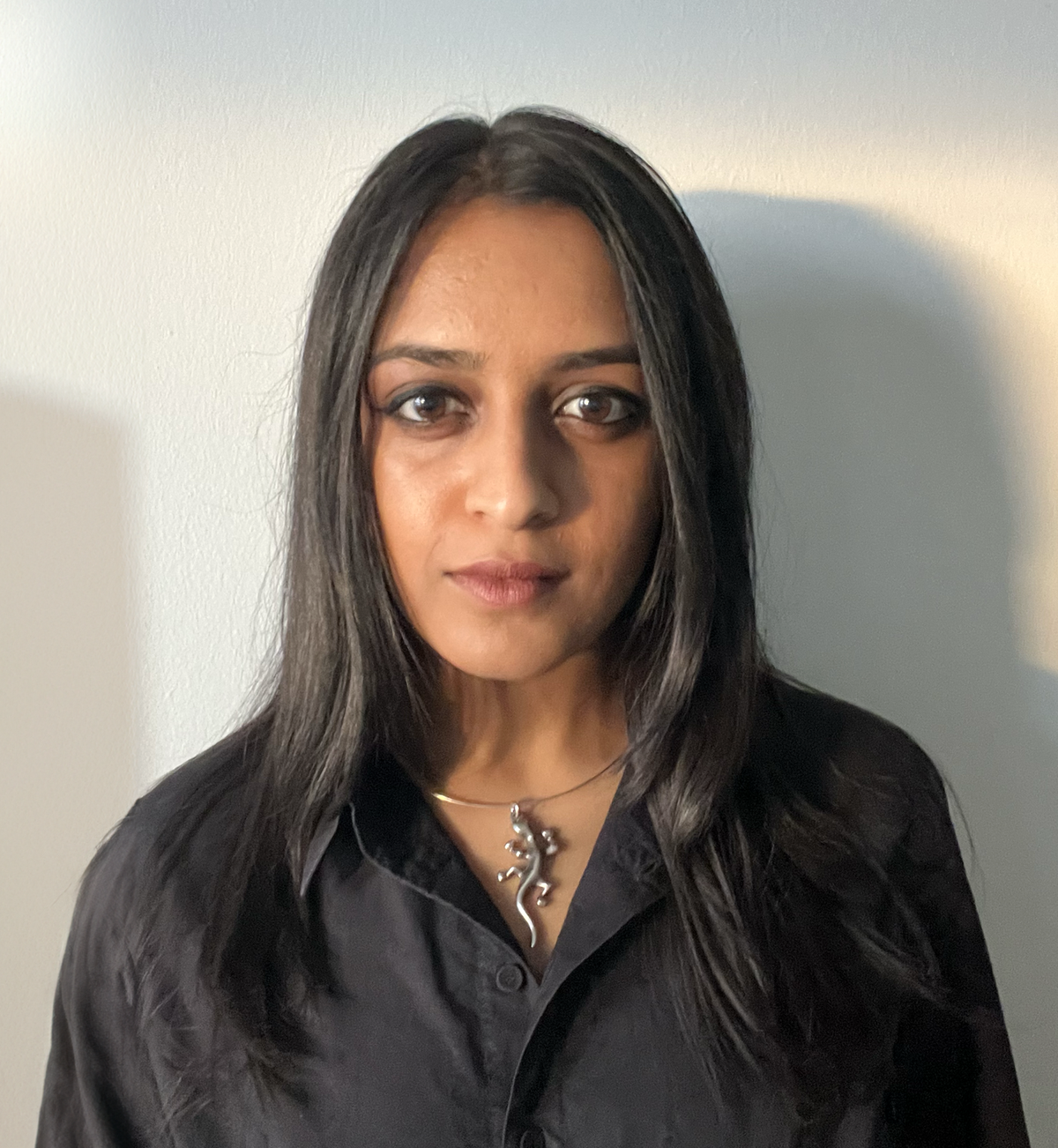
Samyukta Madhu
“The women in this series look really beautiful but there’s also a sense that they are not human; that they might be a bit robotic,” she says over a phone call from Berlin, days before the series is set to be unveiled at Chennai’s Collage (on till September 9), through mammoth 12-foot-high installations, accompanied by an ambient soundscape composed by Elm — an artistic choice to create a sense of awe among her viewers. “So much of the fashion and beauty industries are inspired by science fiction. Movies like BladeRunner and Ghost in the Shell have such a cool aesthetic — just the way we think about bodies and technology and society is really interesting.”
At the same time, Madhu is intrigued by the middle ground between ancient cultures and hypothetical futures. Also part of Reincarnations is The Regent, whose facade is adorned with traditional jewellery reimagined for a digital environment, designs triggered by questions such as: What if metal could float, or emerge from the skin? How can we imagine a marriage between jewellery and cybernetics?
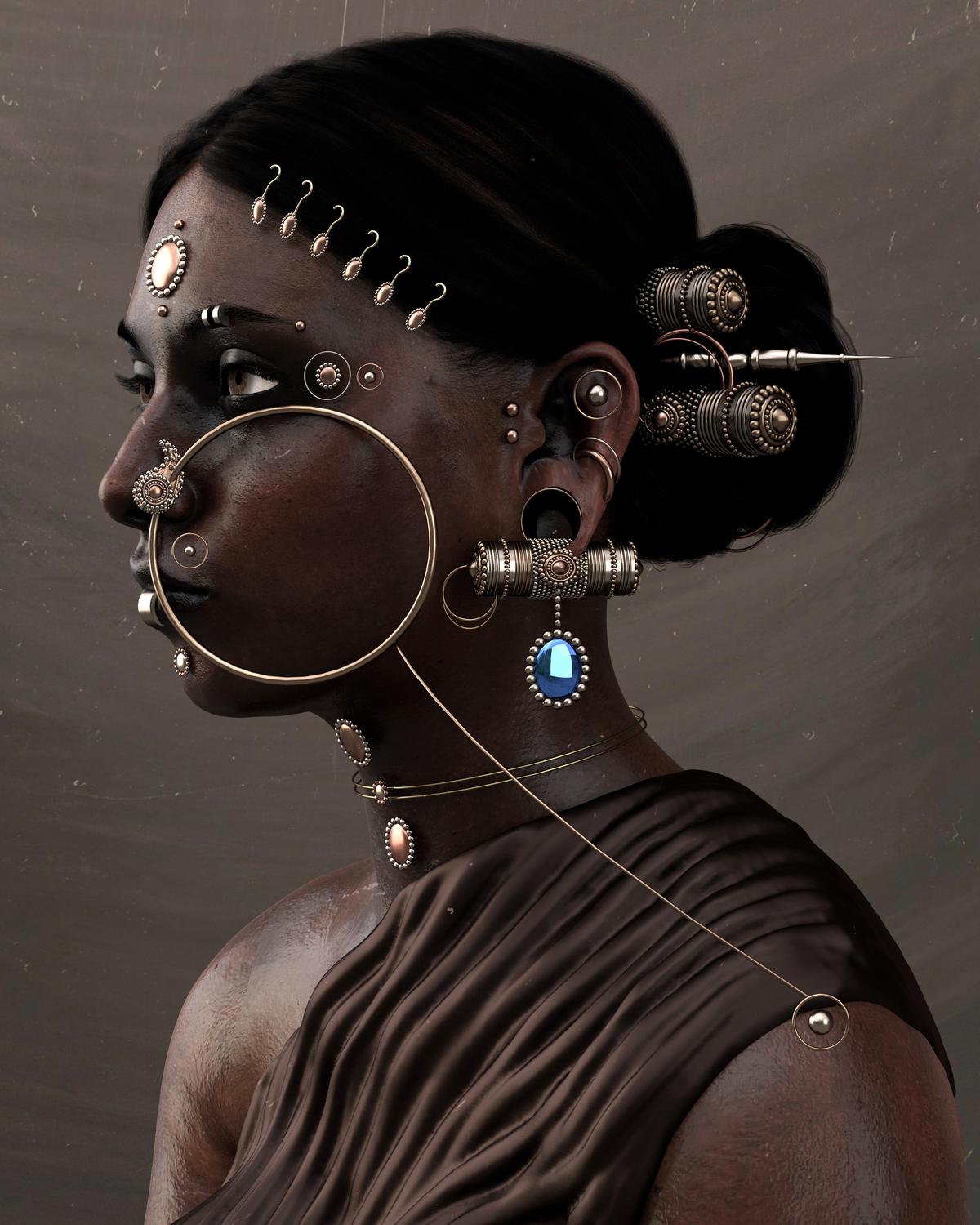
The Regent
Elsewhere, The Priestess sports skin that is “inspired by cold, black wet stone” and whose chest has white kolam inked on it, “reminiscent of the chalk patterns we see drawn outside our homes and places of worship”.
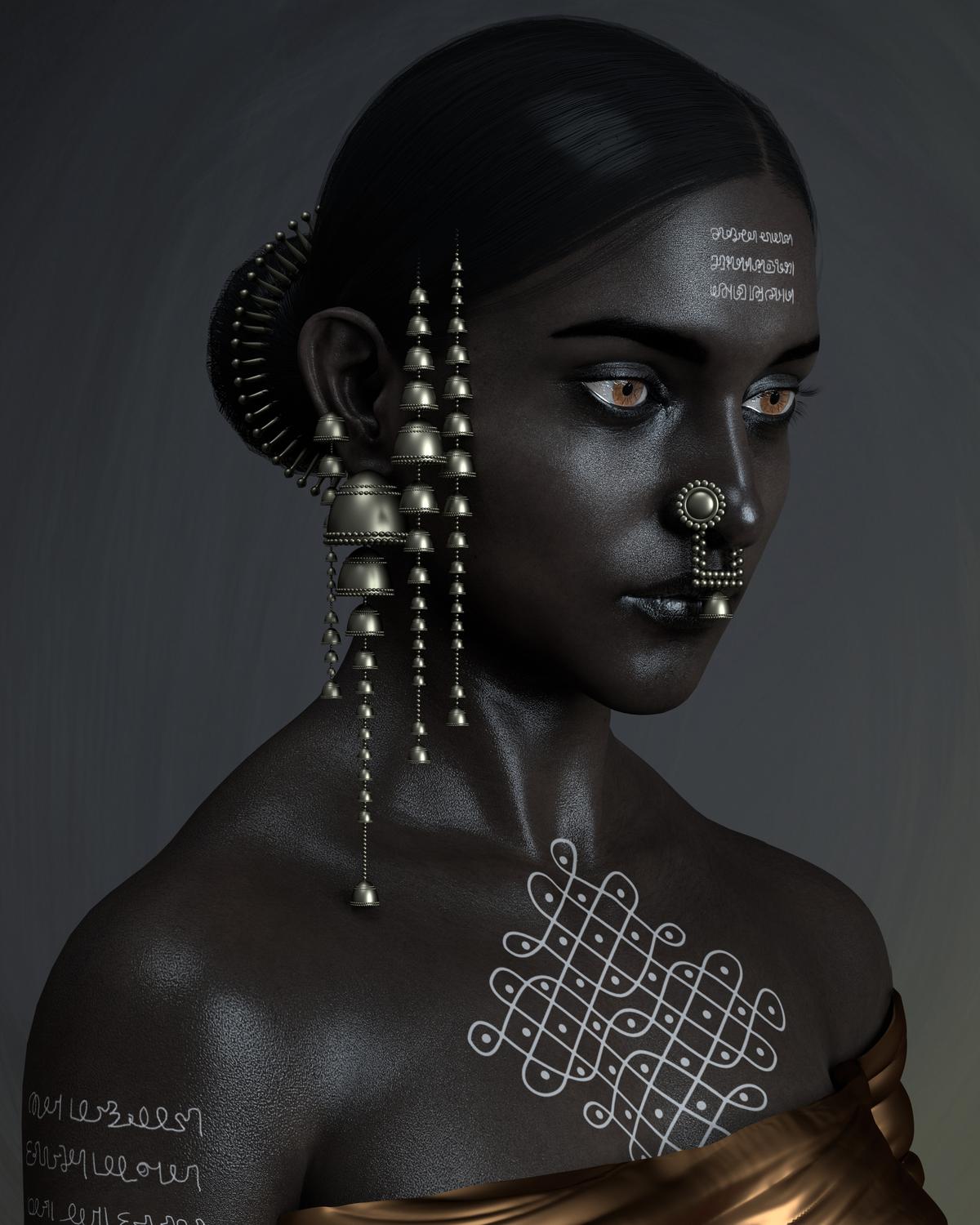
The Priestess
Body as canvas
The kolam is a recurring motif in this series, and it carries its own weight. In an Instagram caption posted along with The Wife, Madhu writes: “When I think about a wife, I think about a home. She makes a house a home. What if we drew kolams on women’s bodies instead of on our doorsteps? What if the kolam was a piece of heavy jewellery? Is it security or a burden?”
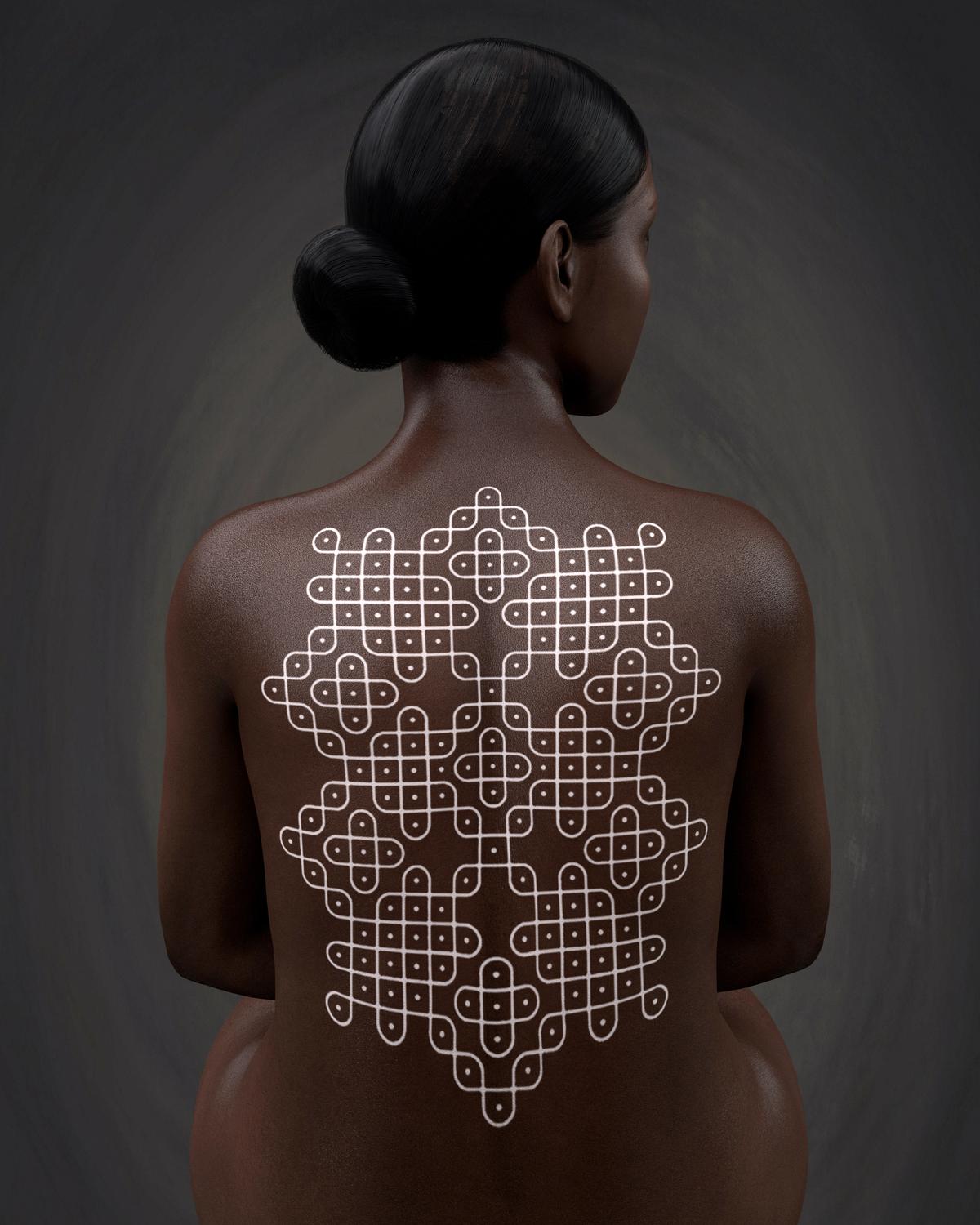
Kolam East
Even as she makes a comment about the beauty industry’s persistent colourist problem through Reincarnations, she has always been intrigued by human bodies — especially their potential to be canvases for demonstrating identity, self-made or imposed. In 2017, Madhu, then based in NYC and working as an illustrator, tasted Internet fame (and notoriety) with her series of vibrant neon-hued artworks that showcased the new-age south Asian woman — pink hair, Kali tattoos, cigarettes and temple jewellery, all in one frame.
Keen to explore the “endlessness of bodies in digital and physical spaces”, she felt drawn to 3D and CGI art, which she taught herself during the pandemic when she “had a lot of time”. In 2023, at Le Grand Palais in Paris, she put up a show of 3D artworks called Habeas Corpus, displayed on 10 metre-high LED screens, featuring artificial humans with hyper realistic skin, from which emerged abstract symbols, codes and script that seem almost mercurial in texture. “In CGI, you can really do anything with the human body,” she says.
Flexibility of a digital artist
Making 3D art is nothing like AI, Madhu clarifies, adding that she’s not tried the latter yet. Rather, she says, it’s a laborious, painstaking process involving multiple steps and softwares. For Reincarnations, she mentions using Cinema 3D for composition, Octane for rendering, Substance Painter to paint the tattoos on her characters’ skin. “It’s a pain,” she laughs. “But I guess I like the flexibility of being a digital artist. I’m not burdened with the need for a studio, supplies, canvases. I like the freedom of having my studio on a laptop.”
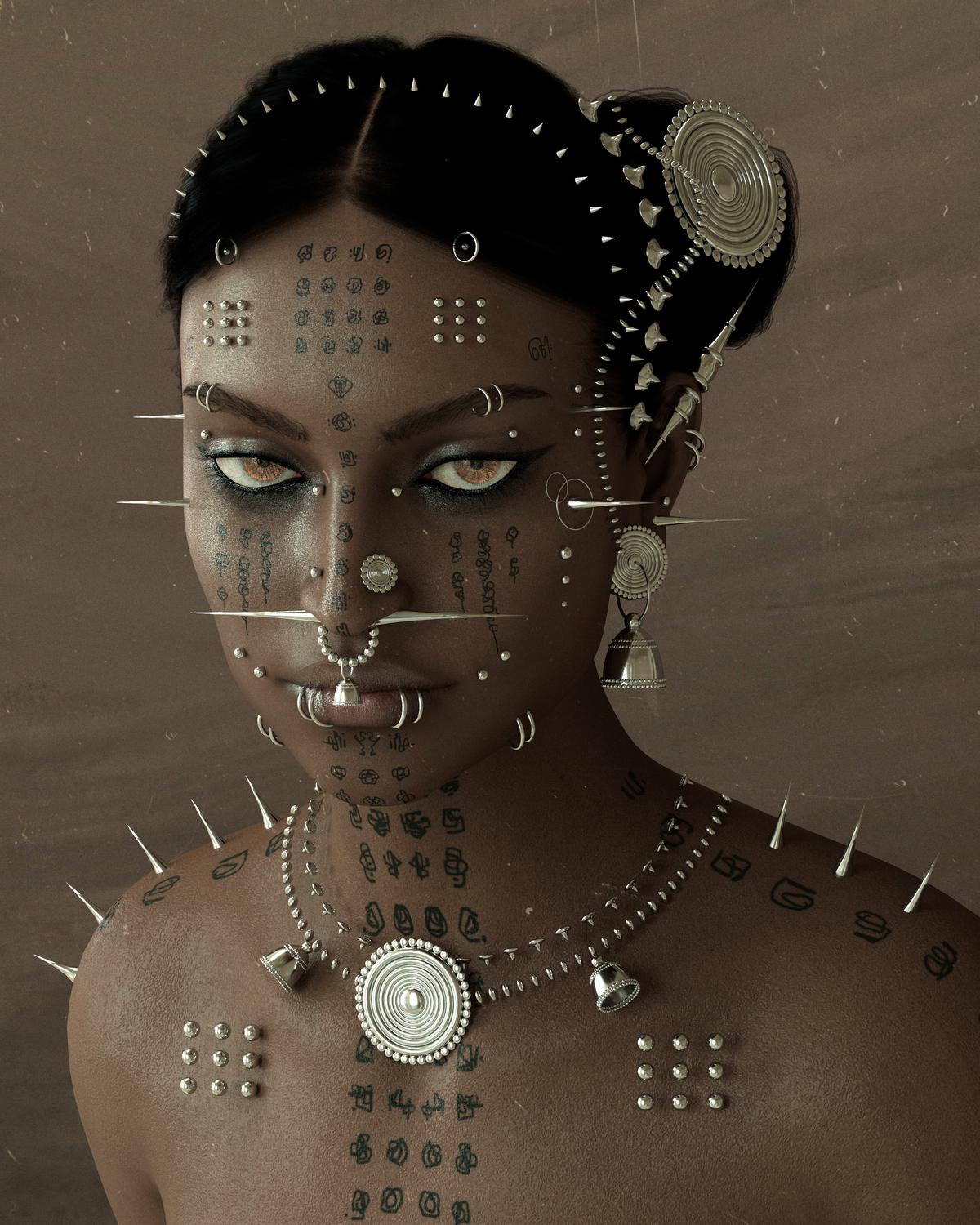
The Warrior
Digital art also comes naturally to the Parsons School of Design graduate, who started making art on tablets and posting it online at age 12. Along with the freedom to create, is the freedom to explore ideas at the axis of progressiveness and tradition, and speculate on alternative timelines or different futures. But how does the artist’s role change when the hand, or the skills involved in drawing, sketching, painting, are no longer needed as much as they used to be?
“I do think AI is a brand new frontier,” she says, “and there’s going to be a lot of plagiarism and legal issues. Right now, there’s so much rubbish on Instagram that it’s very exhausting to be on it. But in the end, AI, 3D, CGI are all just tools. They’re like a paintbrush, just in a different way. What’s still important is the idea. If you have a concept that’s interesting, you can use anything to put that out into the world and people will recognise it.”
The writer is an independent journalist based in Mumbai, writing on culture, lifestyle and technology.
[ad_2]
Source link





